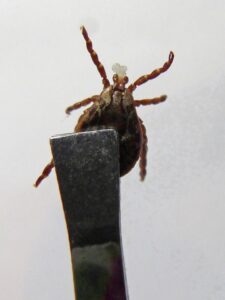If your pet is unwell it is vitally important that he receives the medication that he needs. Unfortunately this is sometimes easier said than done and not all pets are conducive to being medicated! However there are some tricks and tips that can help you ensure your pet receives the medicine that they need to get well. Here is our guide to giving medication to your pet.
Giving Oral Medications
Your veterinarian will advise you if your pet’s oral medication will need to be given with food or on an empty stomach. It is also important to find out whether your pet’s medication must be taken whole or if it can be crushed.
If you are able to give the medicine with food, one of the best tips is to conceal it within a ‘meatball’. This involves concealing the capsule or tablet within a ball of canned food or cheese. If you make the meatball relatively small, your pet should be able to swallow it whole without chewing, which is the ideal way for them to receive the medication. If your pet does chew the meatball and spits out the tablet or capsule, then it will start to break up meaning it will be much harder to try and administer again and the dosage may be wasted. Similarly, if your pet bites into the medicine and it leaves a foul taste in his mouth then he may distrust your attempts to ‘trick’ him in the future.
If it is possible to crush your pets pill and mix it with their food then this is usually one of the easiest methods of administration.
If you are unable to disguise the medicine in food, then you may need to consider regular manual administration of the drugs. This should be done carefully in order to avoid being bitten.
Best practice for manually giving oral medication (tablet or capsule form)
1. You should hold your pets head and tilt it backwards.
2. Gently fold the upper lip over the teeth as you open the mouth, holding your thumb on the roof of his mouth to secure. This is not an essential element, but may help prevent you from being bitten.
3. With your other hand place your middle finger over the central teeth and not the razor-sharp canines, and pull down and open the lower jaw.
4. Drop the capsule or pill as far back on the tongue as you can, then close their mouth and blow on their nose which will encourage a swallowing action.
If you are unable to get the pill far back enough on the tongue then your pet will spit it out. It may be necessary to insert your hand fully into your pet’s mouth in order to achieve a successful administration. However there are also several variations of pilling devices that can reach far enough back to place the medicine for you.
Best practice for manually giving oral medication (liquid form)
One of the benefits of liquid medicine is that it can be inserted in the pouch between the cheek and teeth. Simply use a syringe to squirt the medication into this pouch, hold your pet’s mouth and encourage them to swallow by blowing in their face or tickling their neck. Under no circumstances should you tilt your pet’s head backwards as this could cause the medicine to block the windpipe and inhibit your pet’s ability to breathe.
Giving Ear Medications
If your pet is suffering from any form of ear-related disease then they may require medical ointment to be inserted into their outer ear canal. The steps that you should take are as follows:
1. Hold your pet’s ear canal open, straightening it as much as possible.
2. Place the tip of the applicator tube or bottle into the outer part of her ear canal and enter the required drops. Keep the ear fully stretched at this point to ensure that the medication spreads right into any little crevices in the ear canal.
3. Very gently massage the base of the ear so that the medication is spread evenly.
4. Give your pet a treat as a reward for his behavior.
Giving Eye Medications
Sometimes it is advisable to get someone to help you administer eye medications, as it can be a little traumatic for your pet even though it is generally not painful. Here is how we recommend that you administer eye medication to your pet.
1. Hold your pet securely. If you are by yourself you should position your pet so that they are unable to back away from you – with pets such as dogs you can secure their hindquarters between your knees and then stabilize his head.
2. Gently clean your pets’ eyes using a damp cotton wool ball or tissue. Make sure you use a fresh one for each eye.
3. Hold your pet’s head carefully and gently pull down one of his lower eyelids to form a small pouch. This area is known as the conjunctival sac and is the best area to apply the drops as they will automatically spread around the eyeball when your pet moves his eye. Stabilize your hand holding the drops against your pet’s forehead as this will make it easier to administer the drops accurately.
4. Holding the dropper just above (but not touching) the sac, drop the correct dosage into the sac or onto the eyeball. Try and hold your pet’s head still for a few seconds to allow the medicine to sink in, before letting go. Once you let go your pet will probably shake his head, but by this point the medicine should have dispersed evenly in the eye.
5. Rinse and repeat with the other eye!
6. Give your pet a treat to reward his good behavior.
REMEMBER: ALWAYS thoroughly wash your hands before and after administering any form of medication to your pet!
With time and experience it will become easier to administer medication to your pet, and rewarding them for good behavior should encourage them to accept their treatment without fuss.
However if you have any concerns about giving medications to your pet, contact us at Country Veterinary Clinic today and we will be happy to assist you.



